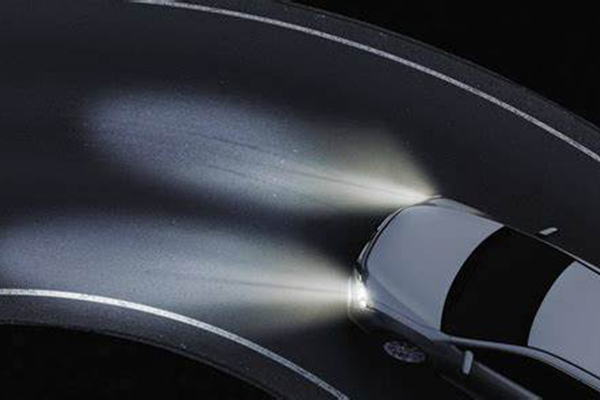Traditional lighting systems have several limitations in the practical use of automotive headlights. For instance, conventional low-beam headlights often provide insufficient illumination at close range, especially in complex urban traffic conditions.
Drivers frequently use high-beam headlights and front fog lights simultaneously at night, causing glare for other motorists. Additionally, there are lighting blind spots when vehicles are making turns, hampering drivers’ ability to perceive obstacles accurately.
Moreover, during rainy conditions, the reflection of light from the road surface creates glare and visual discomfort. Developing a headlight system with multiple lighting functionalities that can automatically adapt to driving conditions became necessary to address these issues. Thus, the Adaptive Front Lighting System (AFS) was introduced.
AFS Overview:
The Adaptive Front Lighting System (AFS) is an advanced headlight system that can automatically adjust the light pattern based on various driving conditions. AFS is an abbreviation for Adaptive Front Lighting System. It is one of the latest technologies in automotive lighting, significantly contributing to nighttime driving safety.
Components of AFS:
AFS consists of a sensor group, transmission pathway, processor, and actuator. Given the need to make comprehensive judgments about different vehicle driving states, AFS inherently becomes a complex multi-input and multi-output system.
Sensor Integration in AFS:
To achieve different functionalities, AFS relies on data from various sensors. For instance, to enable curve-adaptive lighting, information such as vehicle speed from a speed sensor, steering wheel angle from a steering angle sensor, and vehicle body tilt angle from a body height sensor are crucial.
Additionally, specialized sensors are used to acquire information about the actual steering angle of the vehicle and visible light range, which helps identify obstacles. This is where the ALS-AK510 environmental light sensor chip comes into play.
Introducing ALS-AK510:
We recommend the ALS-AK510 environmental light sensor chip from Taiwan. The AK510 is a low-cost visible light sensor that provides a current output proportional to the ambient light level.
The chip incorporates an optical filter to respond close to that of the human eye or a “photopic” response. The current can be converted into voltage by serially connecting a resistor to the output current.
The dynamic range is determined by external resistors and the power supply (a 10K resistor and 5V supply yield a range of 0 to 160 Lux, but a 1K resistor can exceed 700 Lux). The chip’s internal dark current elimination circuit ensures stable accuracy across the entire temperature range, even in low light levels.
Key Features of ALS-AK510:
- Temperature stability
- Photopic response approximating human eye sensitivity
- High infrared suppression with built-in optical filters
- Highly linear current output in relation to ambient light levels
- Integration of the light current amplifier response curve
- Excellent dark current performance
- High humidity immunity
Conclusion:
WITH ITS REMARKABLE FEATURES, the ALS-AK510 environmental light sensor chip plays a crucial role in implementing the Adaptive Front Lighting System (AFS) in automotive applications.
By providing accurate ambient light measurements, the chip aids in enabling intelligent and dynamic adjustments to the headlight system, enhancing visibility and safety for drivers. The ALS-AK510’s temperature stability, photopic response, and high humidity immunity make it an ideal choice for automotive manufacturers seeking reliable and cost-effective solutions for adaptive lighting systems.
With continued advancements in sensor technology, we can expect further improvements in automotive lighting systems, paving the way for safer and more efficient nighttime driving experiences.




